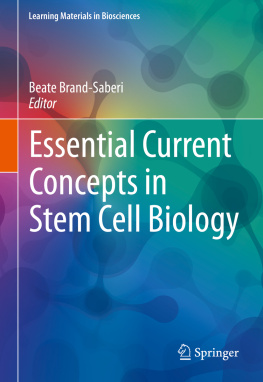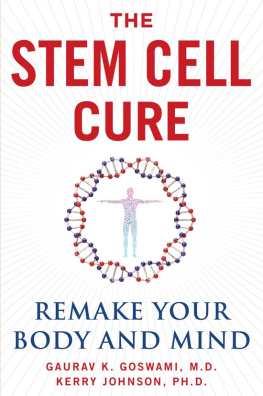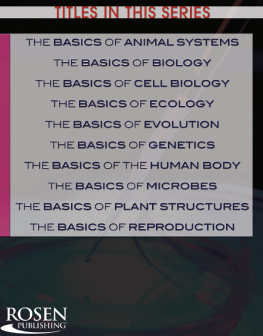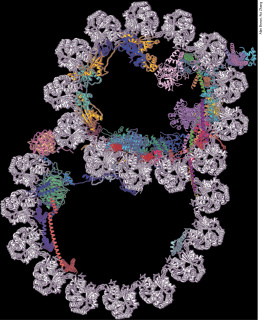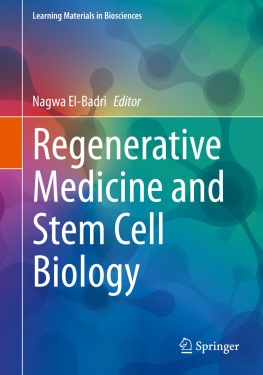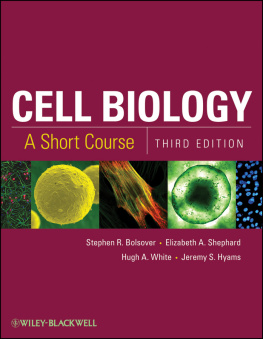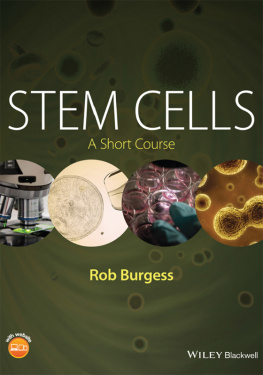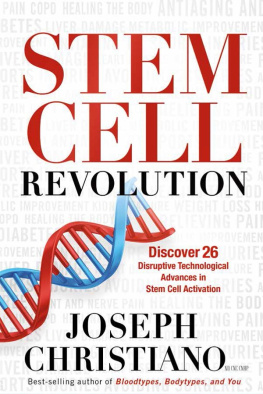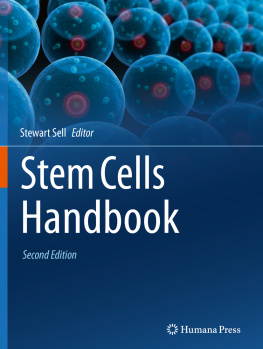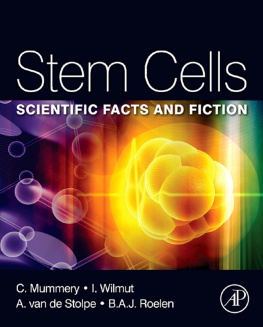Beate Brand-Saberi - Essential Current Concepts in Stem Cell Biology
Here you can read online Beate Brand-Saberi - Essential Current Concepts in Stem Cell Biology full text of the book (entire story) in english for free. Download pdf and epub, get meaning, cover and reviews about this ebook. year: 2020, publisher: Springer International Publishing, genre: Home and family. Description of the work, (preface) as well as reviews are available. Best literature library LitArk.com created for fans of good reading and offers a wide selection of genres:
Romance novel
Science fiction
Adventure
Detective
Science
History
Home and family
Prose
Art
Politics
Computer
Non-fiction
Religion
Business
Children
Humor
Choose a favorite category and find really read worthwhile books. Enjoy immersion in the world of imagination, feel the emotions of the characters or learn something new for yourself, make an fascinating discovery.
- Book:Essential Current Concepts in Stem Cell Biology
- Author:
- Publisher:Springer International Publishing
- Genre:
- Year:2020
- Rating:5 / 5
- Favourites:Add to favourites
- Your mark:
- 100
- 1
- 2
- 3
- 4
- 5
Essential Current Concepts in Stem Cell Biology: summary, description and annotation
We offer to read an annotation, description, summary or preface (depends on what the author of the book "Essential Current Concepts in Stem Cell Biology" wrote himself). If you haven't found the necessary information about the book — write in the comments, we will try to find it.
Essential Current Concepts in Stem Cell Biology — read online for free the complete book (whole text) full work
Below is the text of the book, divided by pages. System saving the place of the last page read, allows you to conveniently read the book "Essential Current Concepts in Stem Cell Biology" online for free, without having to search again every time where you left off. Put a bookmark, and you can go to the page where you finished reading at any time.
Font size:
Interval:
Bookmark:
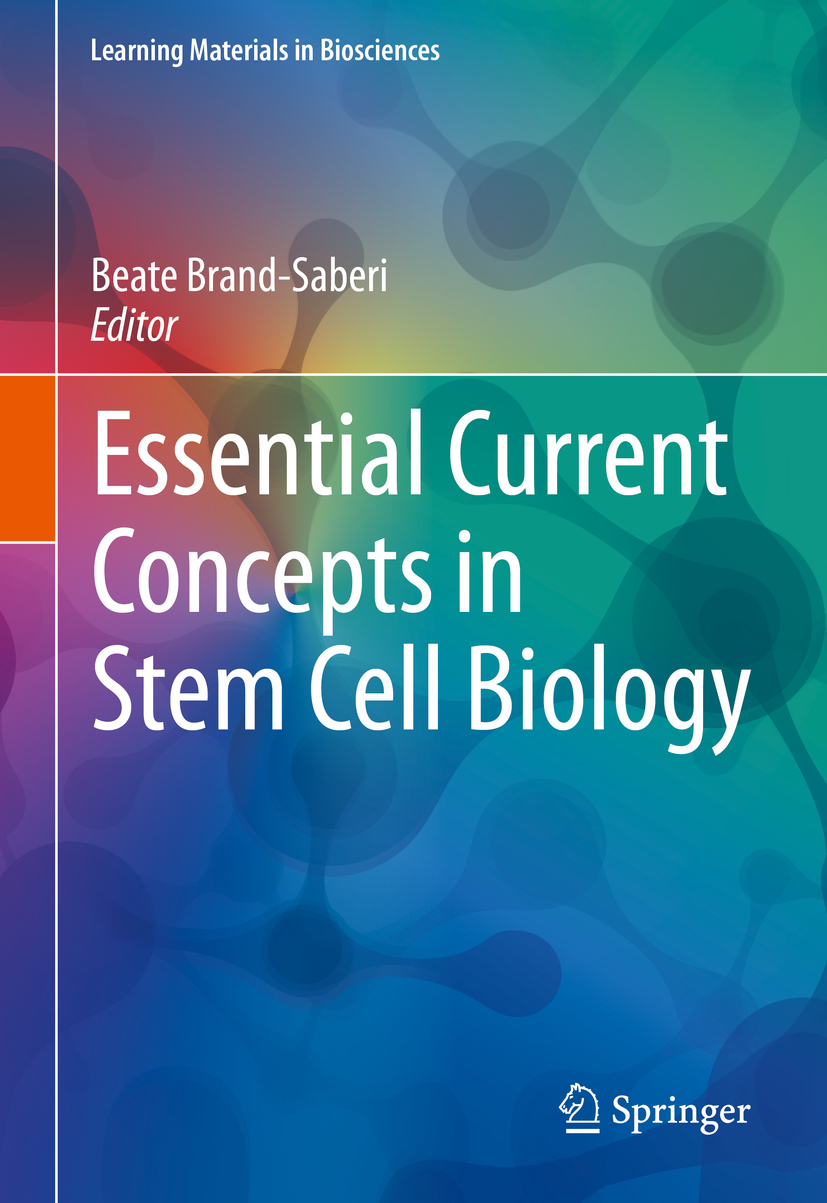
Learning Materials in Biosciences textbooks compactly and concisely discuss a specific biological, biomedical, biochemical, bioengineering or cell biologic topic. The textbooks in this series are based on lectures for upper-level undergraduates, masters and graduate students, presented and written by authoritative figures in the field at leading universities around the globe.
The titles are organized to guide the reader to a deeper understanding of the concepts covered.
Each textbook provides readers with fundamental insights into the subject and prepares them to independently pursue further thinking and research on the topic. Colored figures, step-by-step protocols and take-home messages offer an accessible approach to learning and understanding.
In addition to being designed to benefit students, Learning Materials textbooks represent a valuable tool for lecturers and teachers, helping them to prepare their own respective coursework.
More information about this series at http://www.springer.com/series/15430

This Springer imprint is published by the registered company Springer Nature Switzerland AG
The registered company address is: Gewerbestrasse 11, 6330 Cham, Switzerland
Over the past two decades, stem cell research has exploded: Publications have multiplied exponentially.
The path of ground-breaking findings and innovative molecular approaches was paved with Nobel prizes. Mentioning only a few, the derivation of embryonic stem cells by Sir Martin Evans (Nobel Prize together with Professors Carpecchi and Smithies in 2007) is an outstanding example for a mutual fertilization of interdisciplinary approaches, in this case derived from developmental biology and pathology. The traditional concept of a one-way track regarding the developmental potencies during embryonic development of cells was challenged in the late 1960s by Sir John Gurdons nuclear transfer experiments and eventually revolutionized by Yamanakas pluripotency induction with defined factors (Nobel Prize Professor John Gurdon and Professor Shinya Yamanaka in 2012).
Clearly, stem cell biology belongs to the most innovative and competitive research fields. What is more, it has combined different disciplines in a unique way: Molecular and morphological basic sciences have met with clinical approaches, material sciences and philosophy. Reality has overtaken our imagination once more so rapidly that most of us almost forgot about implementing structured modern approaches to teach stem cell biology.
To date, there are still only very few textbooks addressing stem cell biology and none of them is as comprehensive as the present one. This book has been written by scientists who have been involved in teaching the students of the international master program Molecular and Developmental Stem Cell Biology which was launched at Ruhr University Bochum in 2011 and has been running with great success since then. I am very grateful to all the contributors to this textbook for their great efforts and dedication to their roles as academic teachers in spite of their competitive research projects. Our authors from Tongji University were involved in the ISAP (Internationale Studien- und Ausbildungspartnerschaften) exchange program supported by the DAAD between 2012 and 2016. It was not easy for all contributors to spare the time for writing down their valuable experience and recommendations in textbook chapters. So thank you again to all of them!
This book will be helpul to all those who strive to get into this important transdisciplinary research topic, be it master students, PhD students, MD students, postdocs or clinicians. However, as you will see, there is still some work for you to do: The book is not only intended for learning facts, but also for contemplating the white patches in the mosaic of our growing knowledge. Importantly, the chapters included here reveal that stem cell biology is rapidly expanding towards translational medical approaches, but they also address the challenges to be overcome for future progress. iPSCs, MSC, organoids, regeneration using scaffolds, extracellular vesicles, disease modelling and in depth knowledge of the multiple interacting cell types composing the tissues in our bodies are fascinating still developing aspects of stem cell biology written by experts in the field to be included into this volume. I personally hope that the book will contribute to an unbiassed interdisciplinary (and international) academic dialogue in this field. As stem cell research is often being perceived either with inappropriate hype, hope or simplistic damnation in public, a chapter on bioethics has been included as an integral part of learning about stem cells.
My thanks are due to my colleague PD Dr. Holm Zaehres for his kind advice, support and encouragement during the assembly of the chapters and final stages of this book. I would also like to express my gratitude to Dr. Amrei Strehl of the Springer Nature team and to Bibhuti Sharma of the publishing team for their constructive support and extraordinary patience. Finally and importantly, I wish to thank my family for their understanding and support.
Advanced Therapy Medicinal Products
BM MSCBone marrow mesenchymal/multipotent stromal cells
CB MSCCord blood mesenchymal/multipotent stromal cells
CBCord blood
CB-SCCord blood stromal cells
CDCluster of differentiation
C-METMET or MNNG HOS Transforming gene
CPDCumulative population doubling
Font size:
Interval:
Bookmark:
Similar books «Essential Current Concepts in Stem Cell Biology»
Look at similar books to Essential Current Concepts in Stem Cell Biology. We have selected literature similar in name and meaning in the hope of providing readers with more options to find new, interesting, not yet read works.
Discussion, reviews of the book Essential Current Concepts in Stem Cell Biology and just readers' own opinions. Leave your comments, write what you think about the work, its meaning or the main characters. Specify what exactly you liked and what you didn't like, and why you think so.

